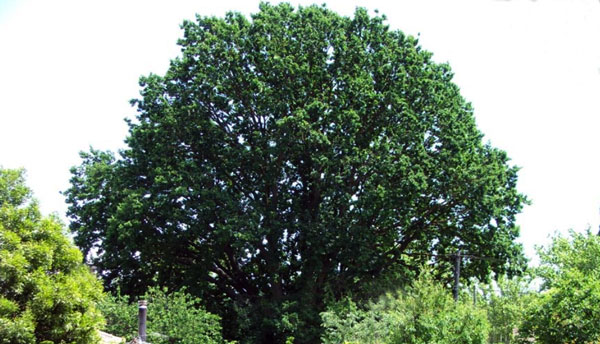
This is a tale of an entrepreneur, a tree and a possible (lost?) good planning opportunity.
The tree is a very significant thing. It is the oldest oak tree in Canberra. It is huge. Huge in size, impact and because of all of that it is hugely important as part of Braddon’s heritage.
It is registered as being: “An Excellent mature specimen on a large block with broad well formed canopy, this English Oak is very prominent when viewed from Farrer Street and Elder Street to the rear. The tree is situated at the rear of the block and is located well clear of the dwelling.”
It is indeed well clear of the owner’s house and is well clear of the house behind. Or at least it was. But there begins this story.
The house behind has been bought by the developer who had also recently bought the bowling club next door.
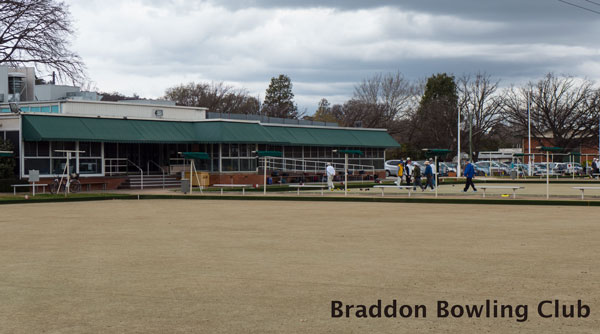
The original bowling club had presented no problems to its neighbours. The bowlers did their thing and the neighbours did their thing. All was good.
Then the club was taken over by the Ainslie Footy Club and things changed, too often for the worse for those nearest. Noisy events and inappropriate alterations caused stress to nearby neighbours over many years.
Even when solutions were found the club would make more alterations or new staff would be left unaware of the issues and their agreed remedies. In short, the Ainslie Footy Club seemed more suited to running large facilities well-separated from houses than a small community club sitting snugly in an old residential area.
Then the neighbourhood saw the news in the paper that the land, clubhouse and all, had been sold onto a developer known for ‘hipster’ developments in Braddon. It was announced in the paper that he wanted to bring that ‘Braddon life’, already well-catered for on Lonsdale and Mort streets, to the bowling club site.
Not mentioned in the paper was that the bowling club is tucked inside a well-established residential part of ‘old Braddon’, opposite Ainslie Primary School and next to a crèche and houses. This is what residents have learnt from the papers, but so far no-one has approached them.
For its part, Canberra’s government has said nothing about this proposed uprooting of community facilities and green space dating from the city’s earliest days.
Canberra’s founding planners, who carefully laid out its gardens and set aside its community spaces, must be turning in their graves: for now, even a cherished part of the ‘old Braddon’ residential precinct is being proposed for redevelopment no differently than if it were an aging used car yard on Lonsdale or Mort streets.
Then there was a notice that something was to happen near the oak tree. The same developer was to demolish the existing modest house on the block behind the tree and build a new one for himself. Again nothing formal at first as to what the plans were, or when (or even whether) there would be an opportunity to comment.
Luckily neighbouring residences have since received some preliminary architectural plans for what appears to be a large accommodation and leisure complex. Given the yet-to-be-seen but media-announced concept for what the developer plans for the bowling club site, some could see this as neatly complementing those proposals. Surely not!
So far, neighbours are more non-plussed than anything. Non-plussed that redevelopment can be proposed for open green space in a residential area without nearby residents first being consulted through a government-led process. And non-plussed that land opposite Canberra’s oldest continuous primary school, which next year celebrates its 90th birthday, could be redeveloped into densely-packed accommodation, entertainment and leisure facilities.
And then there is the question of the lease. Has it been changed?
Perhaps by the time of Ainslie Primary School’s centenary in 1927, yet another part of Canberra’s proud heritage will be gone or under pressure to go.
As for the old oak tree, it is maintaining its majestic sentinel, even though the developer is seeking to build quite close. Appropriate measures are promised so as not to damage its root systems. I am sure our planning bureaucrats would not allow anything else. Surely not.
And at this stage, neighbours say they want only for their privacy and amenity to be respected, and for the tree to continue to be protected. The myriad animals and birds that visit the tree, or make it their home, must also surely be expecting no less.
As for the future of the bowling club site, there is one ray of hope. It did have a special lease and therefore one would hope that the planning directorate would want to ensure that there is no inappropriate change of the lease. Surely they would do the right thing.
Now for a request for some smart planning as to what could be done with an old bowling club site?
By coincidence I visited such a site in Camperdown–the inner suburb of Sydney just west of the University of Sydney. Here the former bowling club has been transformed sympathetically into a hugely successful community and commercial site known as Camperdown Commons.
Here’s few pics – the first one being the former Camperdown bowling club.
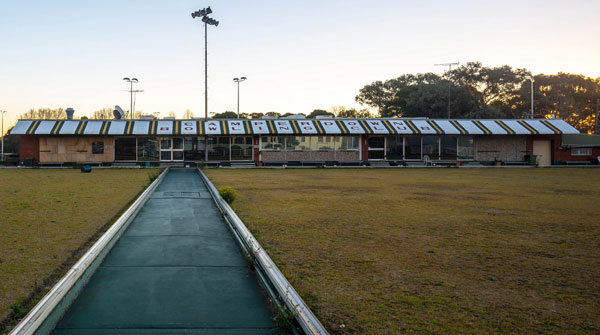
and now…
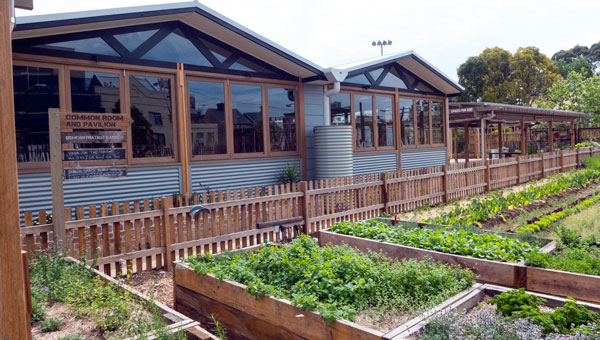
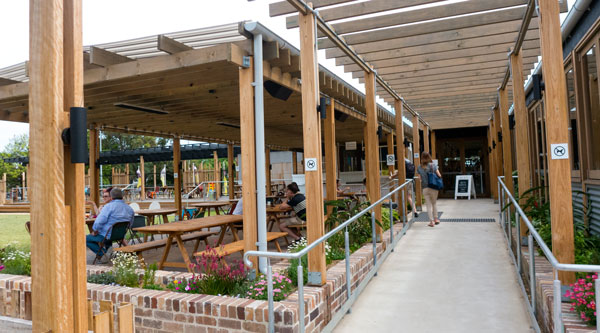

Camperdown Commons comes with a café/restaurant and other community facilities, plus a huge market garden that supplies the restaurant and local stalls and conducts lessons on the growing of vegies and herbs.
On the weekends the place has heaps of families in the café as well as out on the lawns where food is also served (no dogs allowed–very wise).
Here’s a link to their facebook page– click here
Camperdown Commons is a wonderful example of re-use of a community site complete with some limited and appropriate commercial use for the area that is very built up and has a growing number of apartments. It works!
So why not something like that on the bowling club site in Braddon. At the very least, as a first step, how about government getting together with residents and the community to talk through possibilities, and how about considering appropriate development sympathetic to the intentions of Canberra’s founding planners and residents, who set aside the spaces and planted the trees we now admire so much.
Is our planning directorate up for the challenge? Does it really believe in working with the community and working through ideas to have a wonderful solution not unlike that achieved through the establishment of Camperdown Commons.
I am passing this idea and solution over to the new Labor government–and over to the Greens. Hopefully it will encourage everyone to work with the residents to avoid something that could otherwise cause stress to the neighbours of this inner Canberra suburb, and potentially lose forever part of what has made Canberra so special, not just for us ‘Canberraites’, but for our visitors as well.
Watch this space.